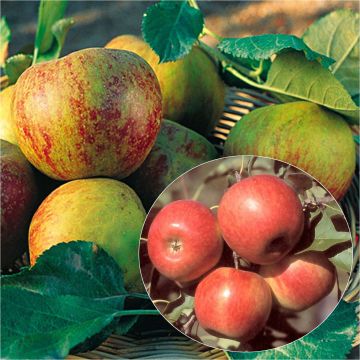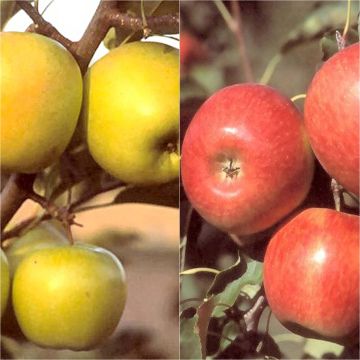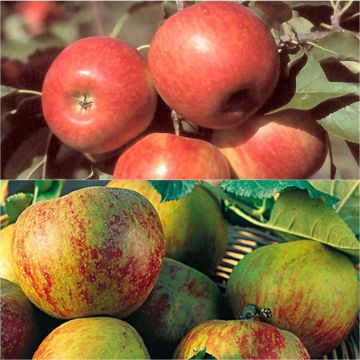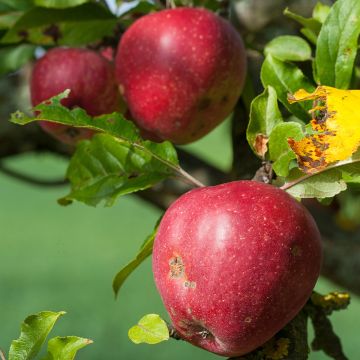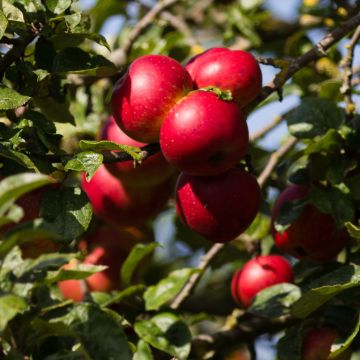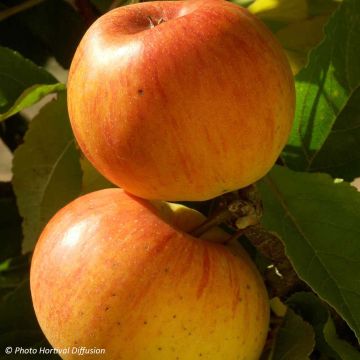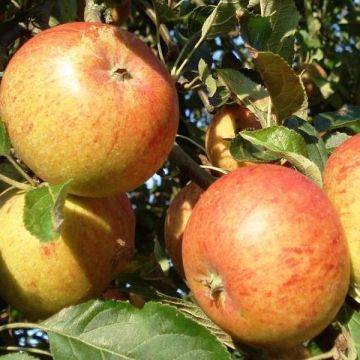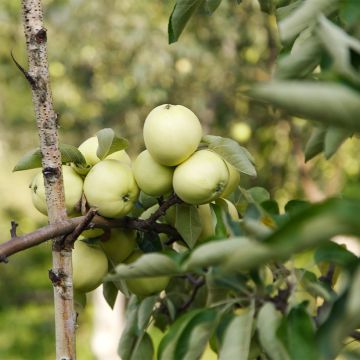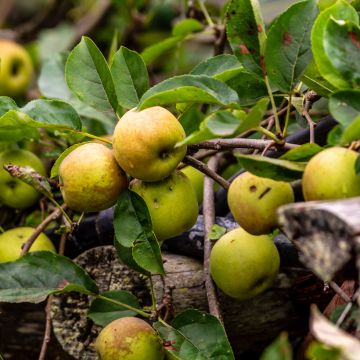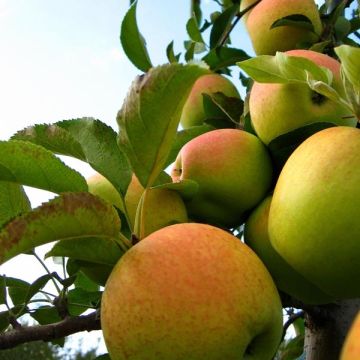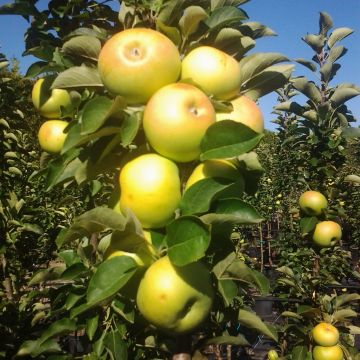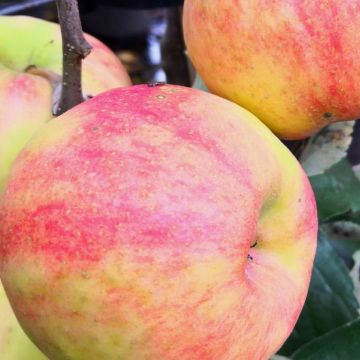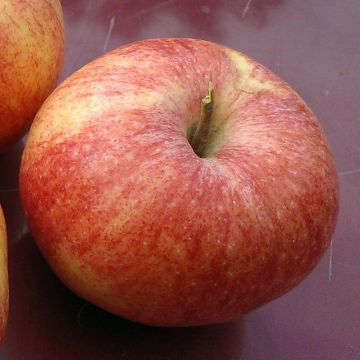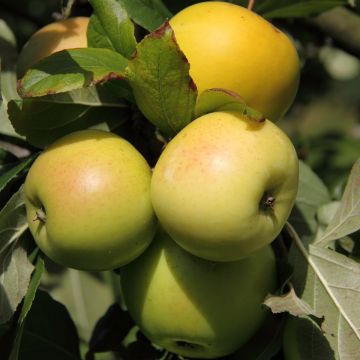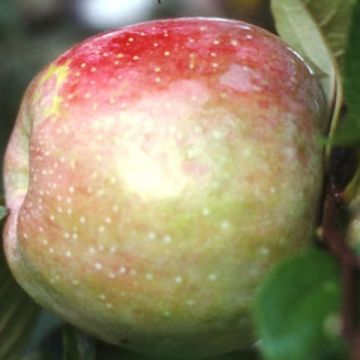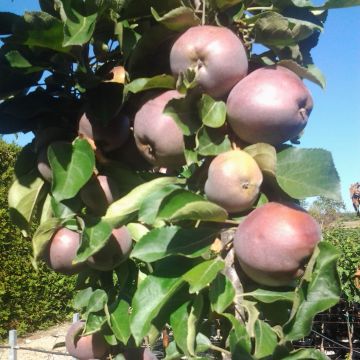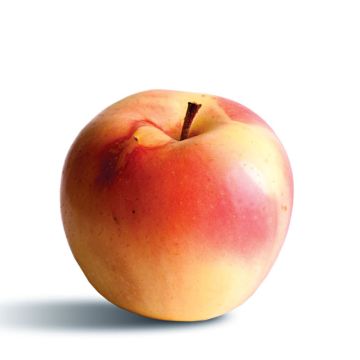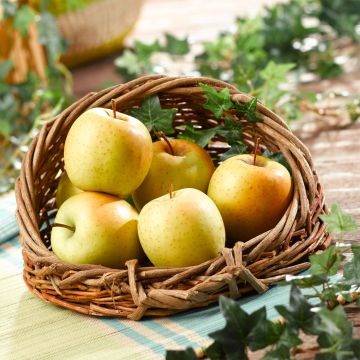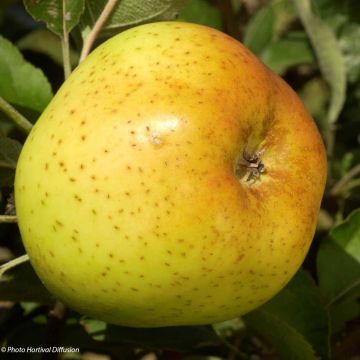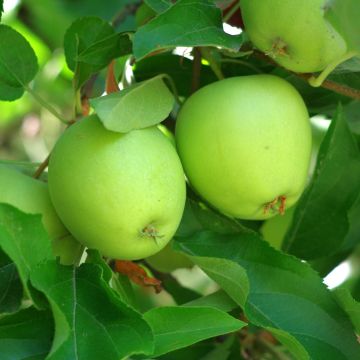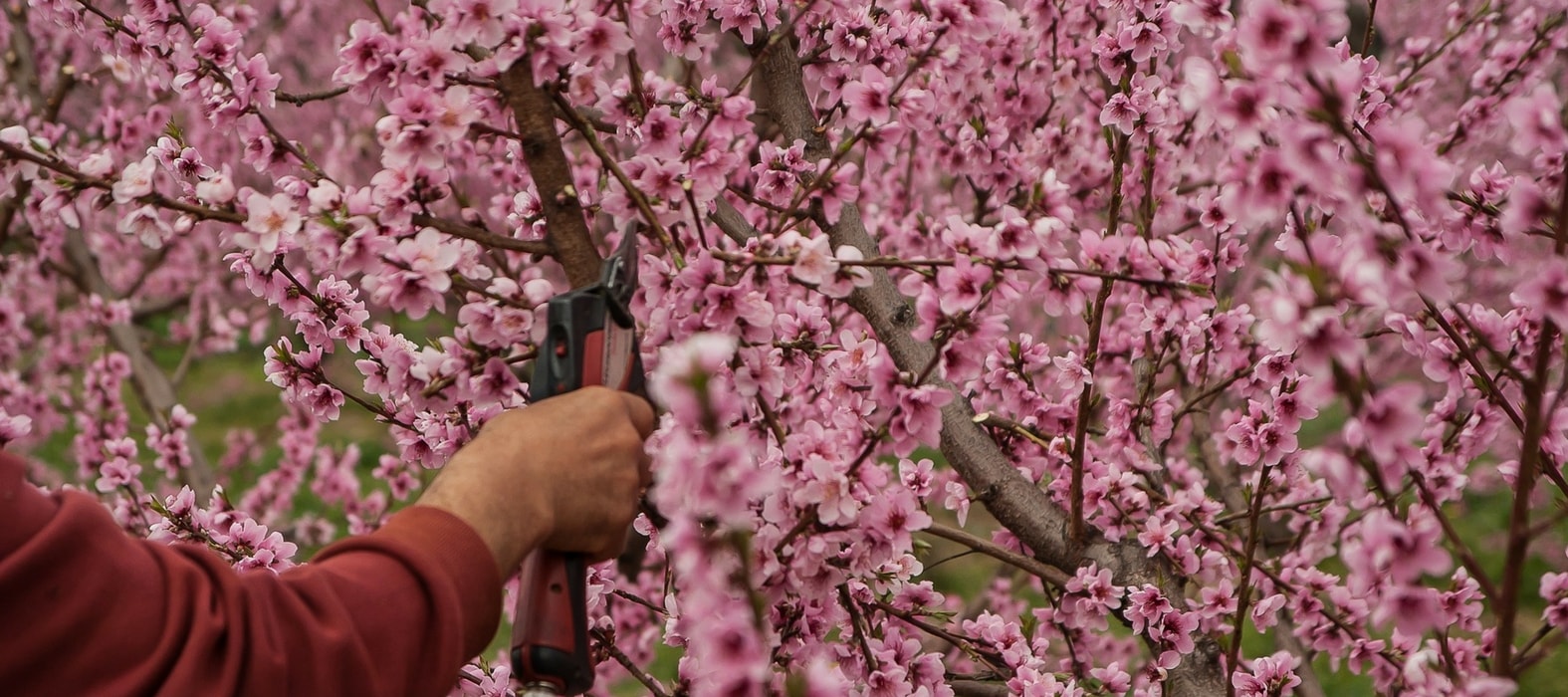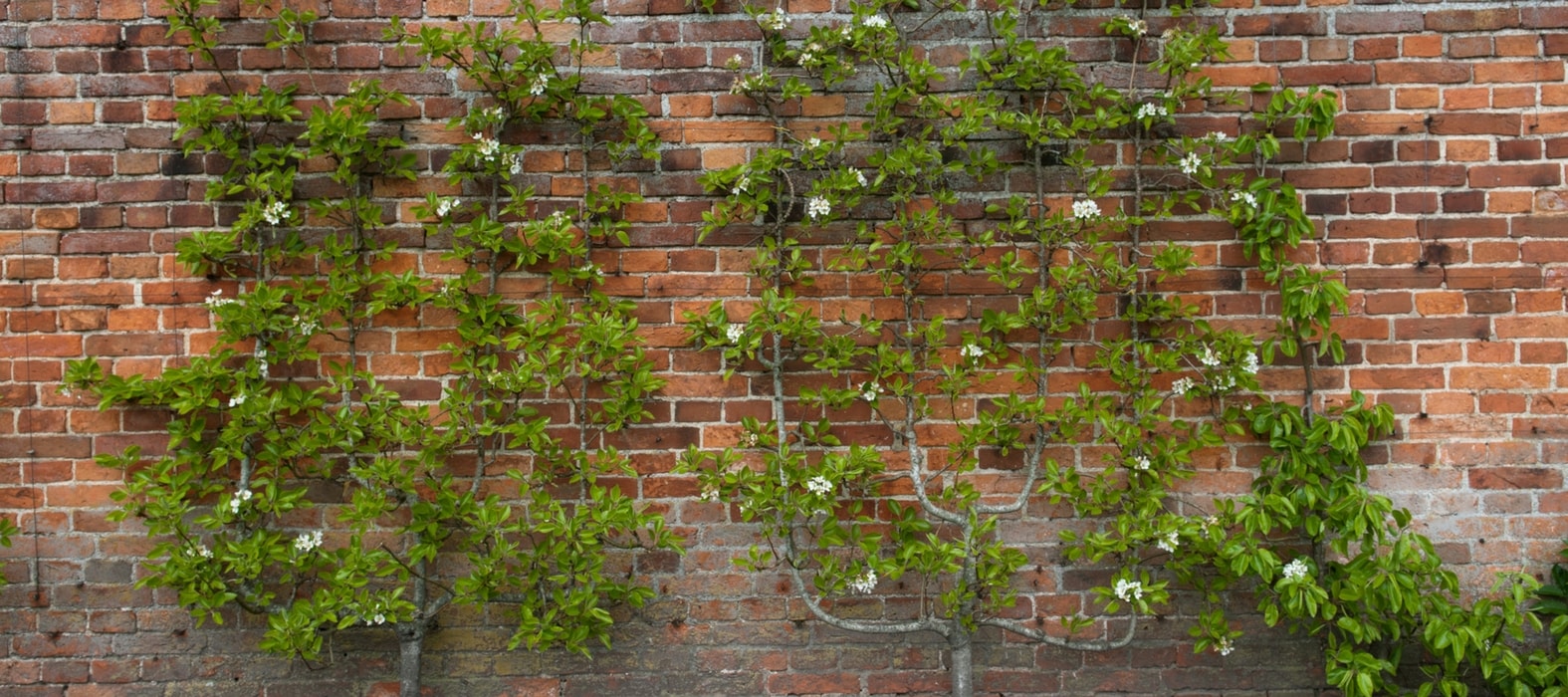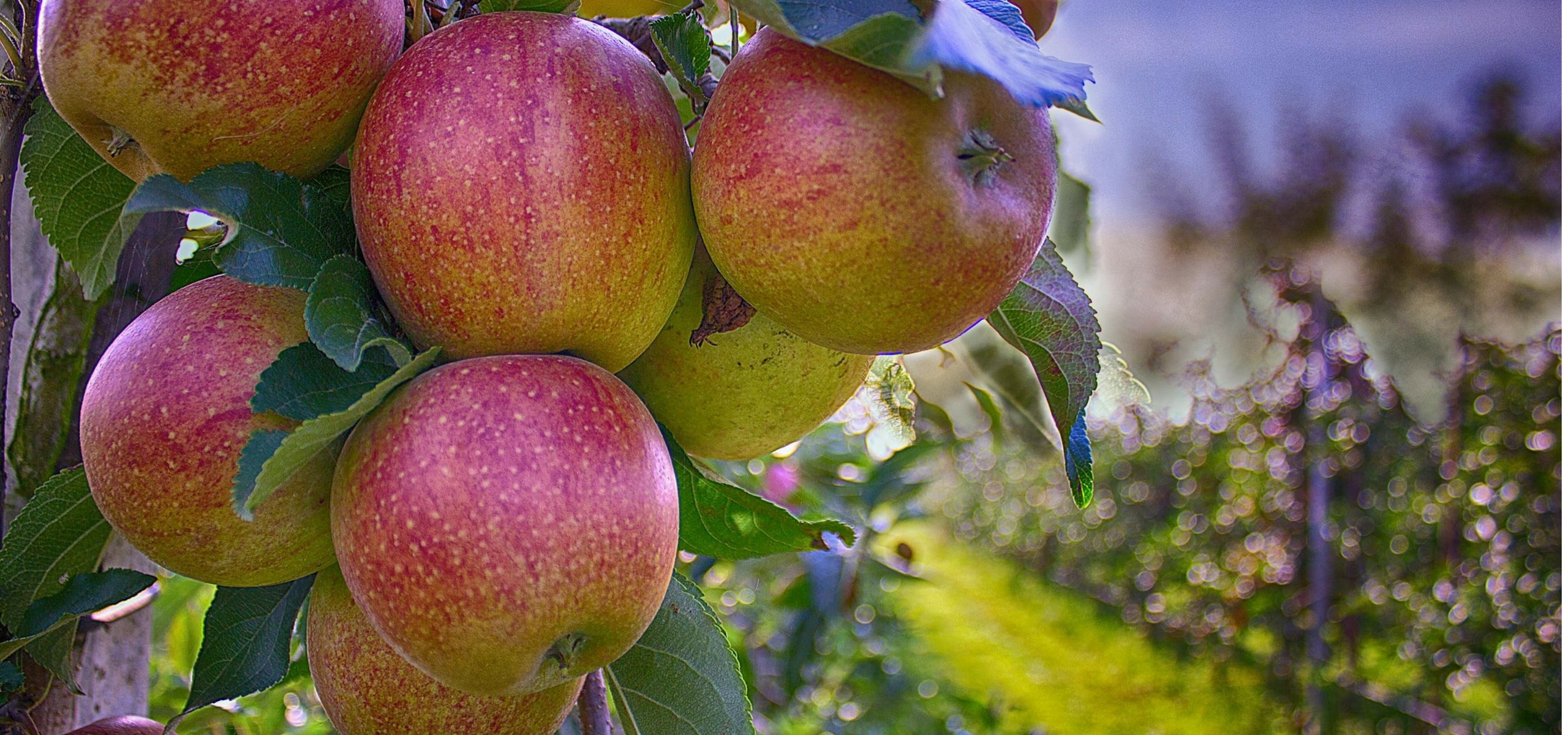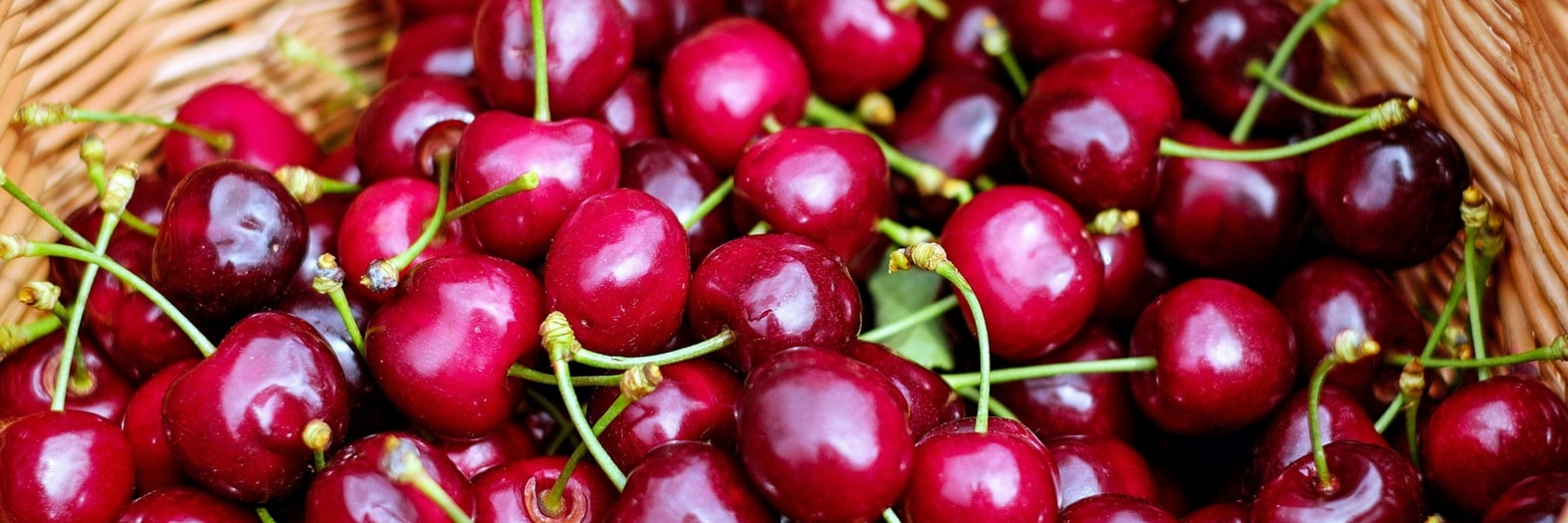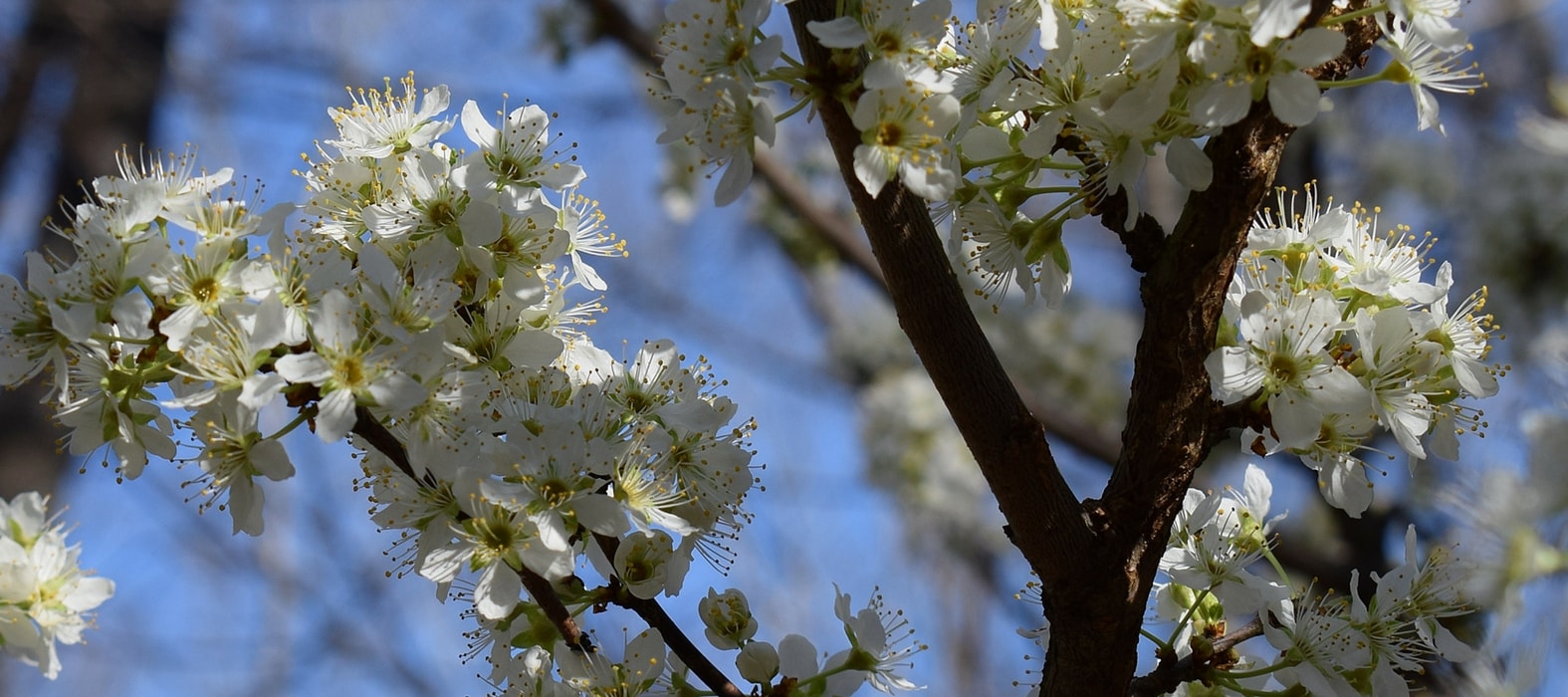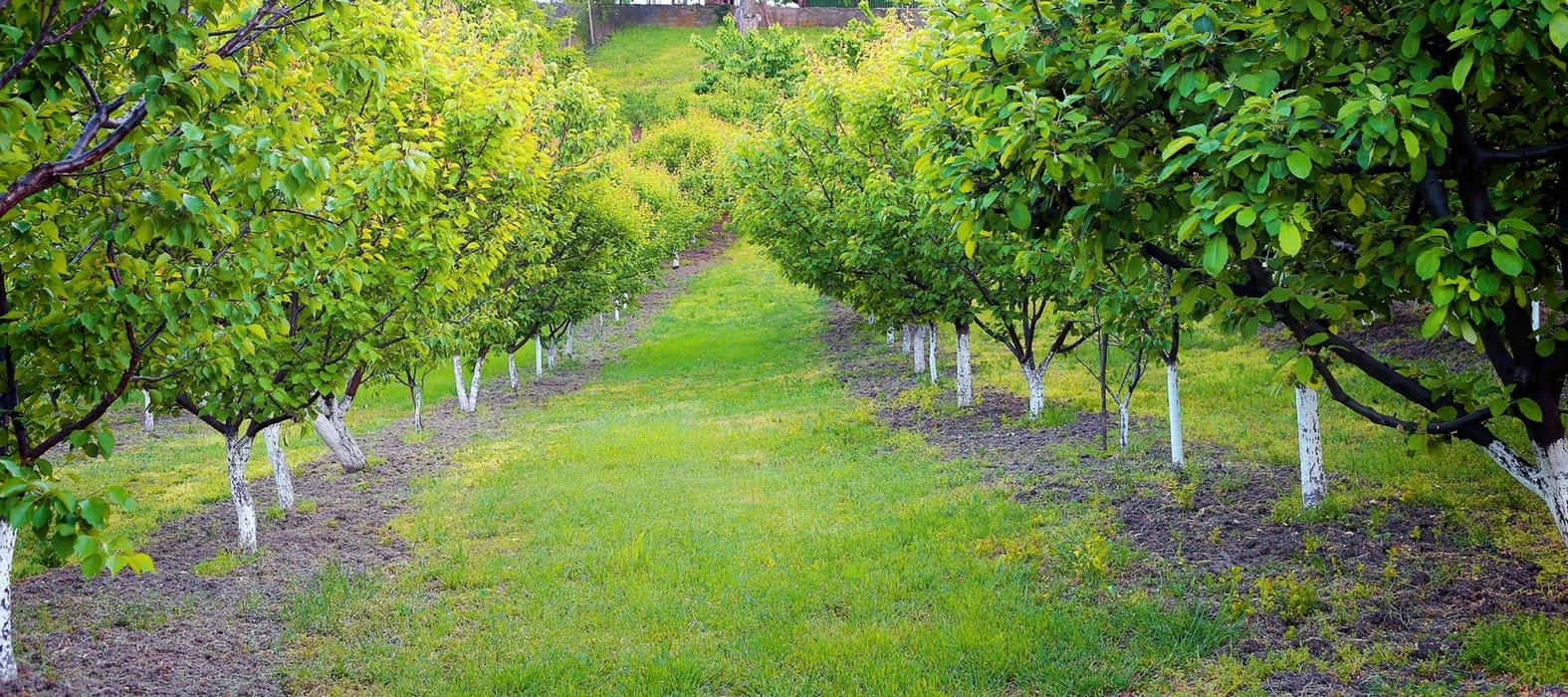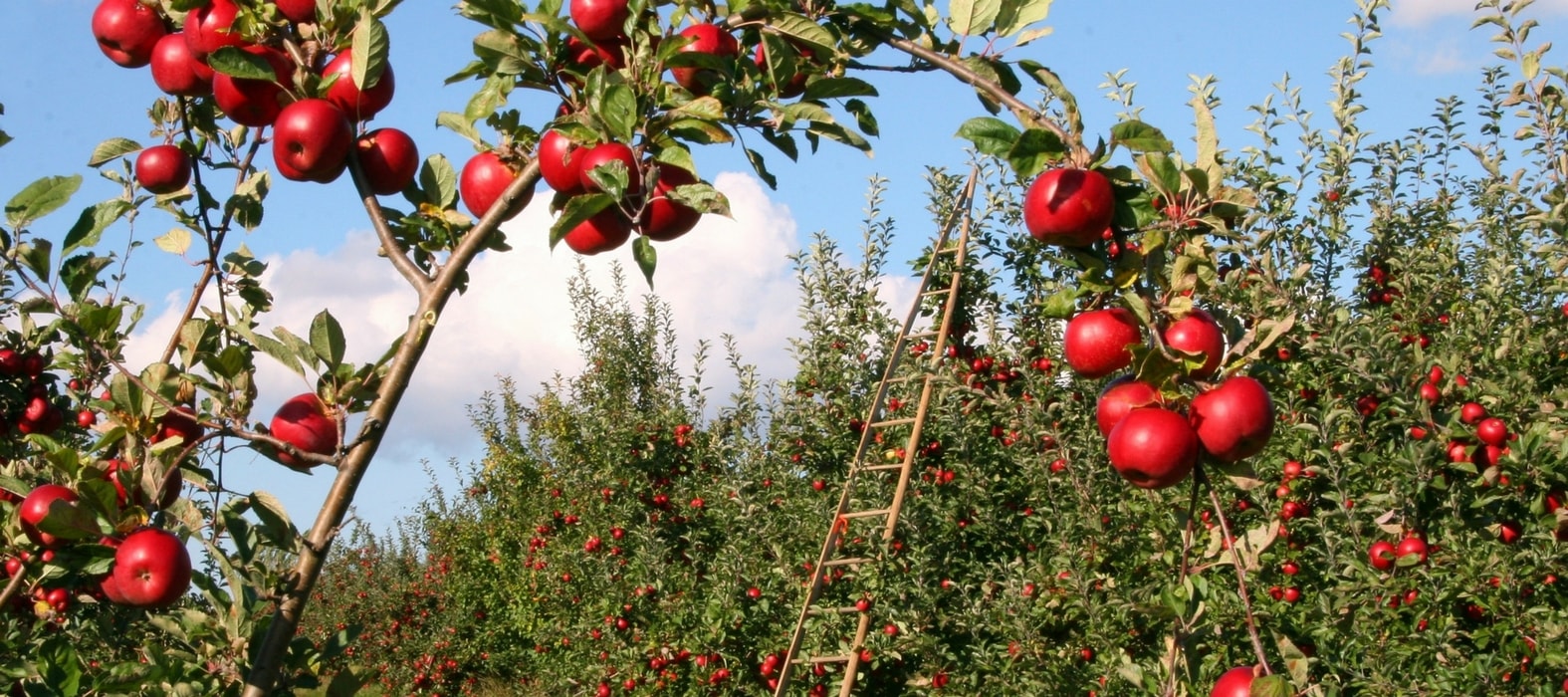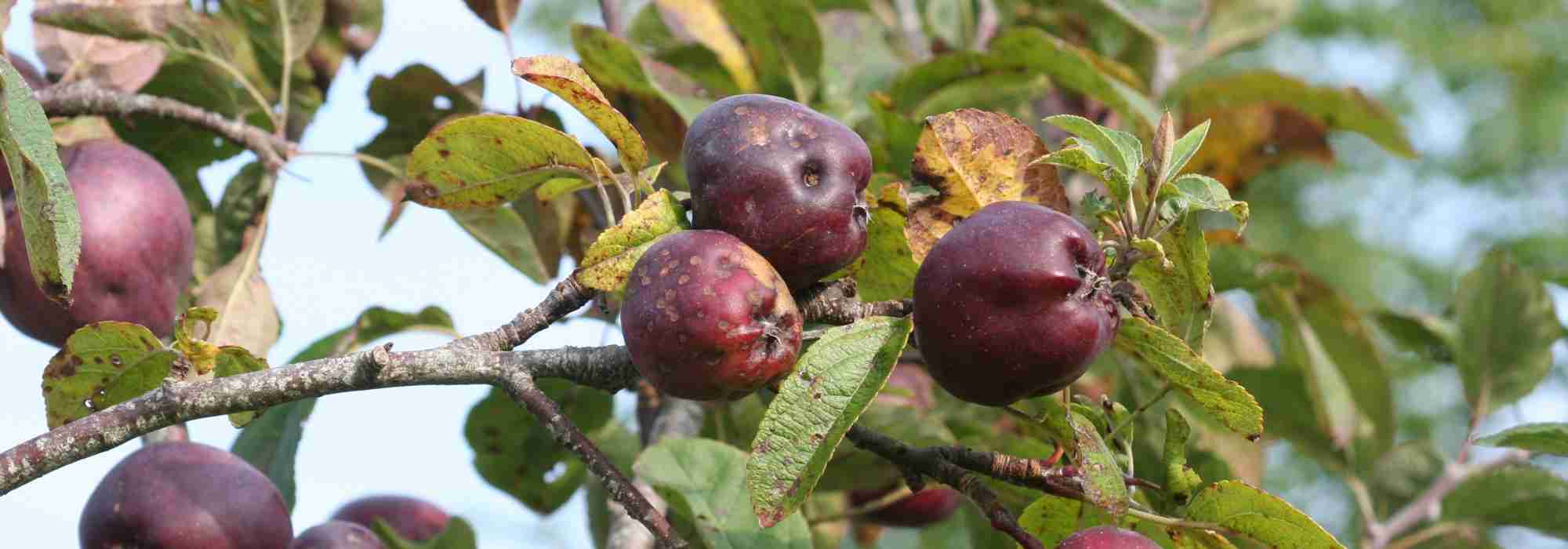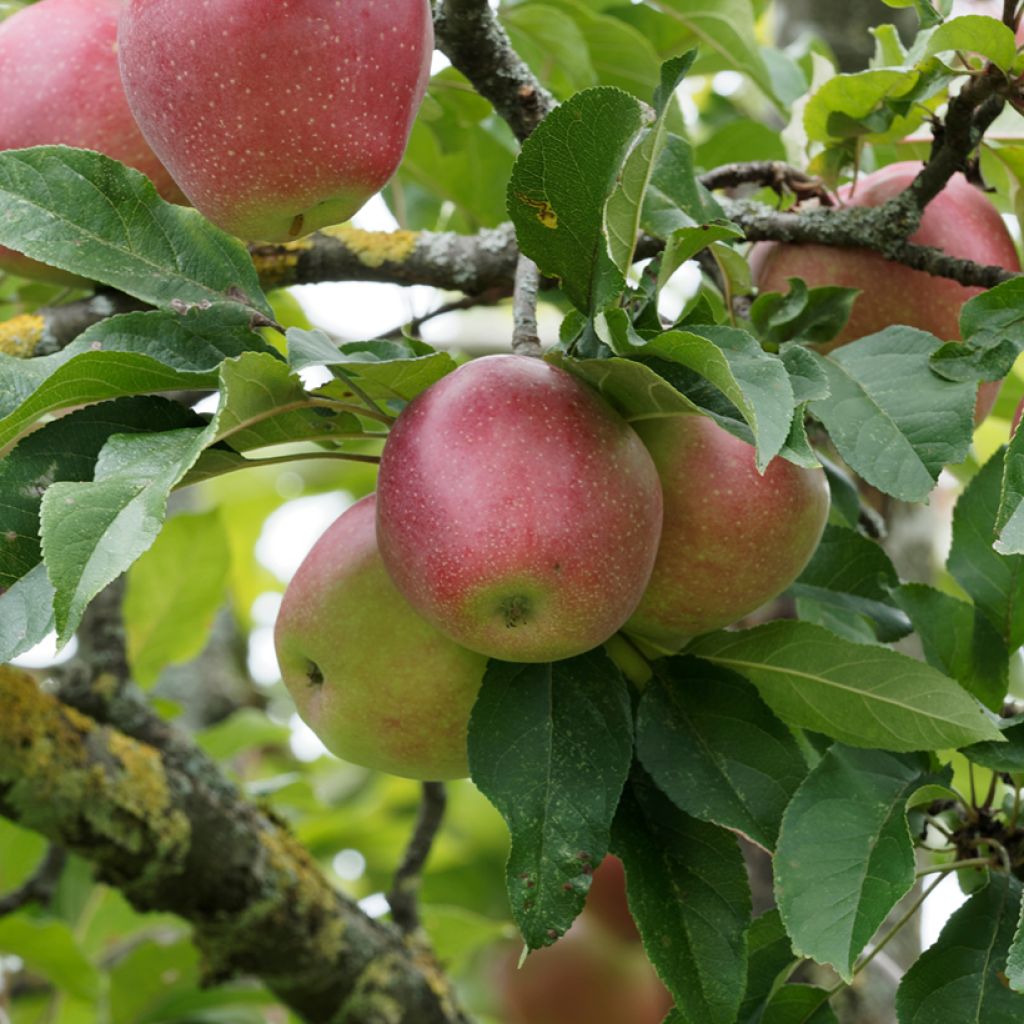

Apple Tree Żeleźniak - Malus domestica
Apple Tree Żeleźniak - Malus domestica
Malus domestica Żeleźniak
Apple
Special offer!
Receive a €20 voucher for any order over €90 (excluding delivery costs, credit notes, and plastic-free options)!
1- Add your favorite plants to your cart.
2- Once you have reached €90, confirm your order (you can even choose the delivery date!).
3- As soon as your order is shipped, you will receive an email containing your voucher code, valid for 3 months (90 days).
Your voucher is unique and can only be used once, for any order with a minimum value of €20, excluding delivery costs.
Can be combined with other current offers, non-divisible and non-refundable.
Why not try an alternative variety in stock?
View all →This plant carries a 6 months recovery warranty
More information
We guarantee the quality of our plants for a full growing cycle, and will replace at our expense any plant that fails to recover under normal climatic and planting conditions.
Description
The 'Żeleźniak' apple tree is an ancient variety originating from Bavaria, Germany, dating back to the early 17th century. Its fruits are intended for storage, as they only develop their full flavour after a period of rest, or ripening. This apple tree is an excellent variety for producing cider, juice, compotes, or dried fruits. The tree is characterised by its hardiness, disease resistance, and ability to tolerate very cold temperatures. This variety requires the presence of a nearby pollinator and is prone to biennial bearing.
Malus domestica 'Żeleźniak' belongs to the Rosaceae family and originates from the Bavaria region in Germany, where it has been cultivated since around 1600. It is also known by names such as Iron Apple, Penny Apple, Red Eizer, Fer Rouge, Durable Three Years, Rother Eiserapfel, Eiser Rouge, and Roter Krieger, depending on the region. This apple tree is cultivated in orchards and is often found in farms and gardens dedicated to fruit production. Traditionally, its fruits were even used as Christmas decorations, hung on trees. 'Żeleźniak' can be a medium to large tree, depending on the rootstock, reaching 3 to 5 metres in height and developing a broad, slightly conical crown. Its growth is vigorous, but it begins fruiting later than other varieties. Its leaves are ovate, dark green, and its branches can support moderately abundant harvests. The fruits of the Żeleźniak apple tree are medium-sized, round, but with visible veins. Their skin is smooth and displays a yellowish-reddish hue with a pronounced blush. A thin, waxy layer gives them a slight sheen. These apples have a characteristic taste, both sweet-tart and juicy, with firm, crisp yellow-white flesh. Although harvesting can begin in late October, the fruits are not immediately edible. Their true flavour develops after a resting period lasting until the end of December. After this period, they become excellent and can be stored until the following June. It is one of the best long-keeping apple varieties.
This apple tree is widely known for its use in industrial production, particularly for cider and concentrates. Żeleźniak apples are highly prized for their ability to age while retaining their flavour quality. Varieties such as Cox's Orange Pippin, Złota Reneta, Idared, Jonatan, and Golden Delicious are good pollinators to ensure better fruiting.
The Żeleźniak apple tree tolerates temperatures down to -26°C. Its spring flowering produces small white or slightly pink flowers, typical of apple trees, which precede fruit formation. This low-maintenance variety thrives in full sun, in well-drained soil. It fruits biennially, meaning some years may be less productive than others. However, this alternation is offset by the longevity and exceptional quality of the harvested fruits.
Apples provide great satiety. Rich in carbohydrates and fructose, they are energising and hydrating. Their content of vitamins A, B, C, and E, minerals, antioxidants, and fibre makes apples a healthy choice. Very popular for their fruits, apple trees have a well-deserved place in gardens. Among a wide range of apple trees, it is easy to find the variety that best suits your preferences.
Plant habit
Fruit
Flowering
Foliage
Botanical data
Malus
domestica
Żeleźniak
Rosaceae
Apple
Malus domestica Pomme de fer, Pomme Penny, Red Eizer, Fer rouge, Durable trois ans, Rother Eiserapfel, Eiser rouge, Roter Krieger
Cultivar or hybrid
Other Apple trees
View all →Planting and care
Choose a sunny spot for your 'Żeleźniak' Apple Tree. The soil can be slightly chalky or acidic, but not excessively so. Dig a wide planting hole at least 3 times the volume of the root ball. Add organic matter (compost, manure, etc.) and a base fertiliser like crushed horn at the same time. Do not bury the graft union. Stake if necessary. For apple trees planted in exposed and windy locations, it may be beneficial to stake them using a guy-wire system: plant 3 stakes in a triangle 50 cm around the trunk, connect them with pieces of wood. Protect the bark with a piece of rubber, for example, and attach the stakes to the trunk with metal wires. Water generously, even in winter, even if it rains. Fruit trees are ideally planted between October and March, outside frost periods. Container-grown plants can be planted all year round except during extreme heat or frost.
In winter, at the base of the tree and lightly worked into the surface of the soil, you can add a small spadeful of wood ash, rich in potash, to improve fruiting. Apple trees can be susceptible to various diseases and pests. To minimise risks, space trees sufficiently, plant mixed-species hedges, install nest boxes or insect hotels to attract beneficial wildlife. In short: prioritise diversity. The main diseases affecting apple trees are scab (brown spots on the leaves), brown rot (withering of flowers and rotting of fruit on the tree), and powdery mildew (white felting on the leaves). For these three cases, preventive action is preferable by spraying horsetail decoction; as a last resort and in cases of severe infestation, a curative treatment with Bordeaux mixture can be applied. As for pests, the codling moth (or fruit worm) is a small caterpillar, hatched from a moth's eggs, which burrows into the fruit. To combat this, it is best to act preventively by encouraging the presence of birds and bats through the installation of nest boxes. In case of aphid infestation, spray a solution based on black soap.
During harvest in September-October, only keep picked fruit. For optimal storage, place apples with their stalk end downwards in crates or trays. Apples can be stored in a cool, dry place, away from light, at a temperature of around 8 to 10°C, or in an airtight cold room at 1 to 3°C. Apples release ethylene, a gas that promotes fruit ripening. To speed up the ripening of other fruits or vegetables, place apples nearby.
Planting period
Intended location
Care
Planting & care advice
This item has not been reviewed yet - be the first to leave a review about it.
Haven't found what you were looking for?
Hardiness is the lowest winter temperature a plant can endure without suffering serious damage or even dying. However, hardiness is affected by location (a sheltered area, such as a patio), protection (winter cover) and soil type (hardiness is improved by well-drained soil).

Photo Sharing Terms & Conditions
In order to encourage gardeners to interact and share their experiences, Promesse de fleurs offers various media enabling content to be uploaded onto its Site - in particular via the ‘Photo sharing’ module.
The User agrees to refrain from:
- Posting any content that is illegal, prejudicial, insulting, racist, inciteful to hatred, revisionist, contrary to public decency, that infringes on privacy or on the privacy rights of third parties, in particular the publicity rights of persons and goods, intellectual property rights, or the right to privacy.
- Submitting content on behalf of a third party;
- Impersonate the identity of a third party and/or publish any personal information about a third party;
In general, the User undertakes to refrain from any unethical behaviour.
All Content (in particular text, comments, files, images, photos, videos, creative works, etc.), which may be subject to property or intellectual property rights, image or other private rights, shall remain the property of the User, subject to the limited rights granted by the terms of the licence granted by Promesse de fleurs as stated below. Users are at liberty to publish or not to publish such Content on the Site, notably via the ‘Photo Sharing’ facility, and accept that this Content shall be made public and freely accessible, notably on the Internet.
Users further acknowledge, undertake to have ,and guarantee that they hold all necessary rights and permissions to publish such material on the Site, in particular with regard to the legislation in force pertaining to any privacy, property, intellectual property, image, or contractual rights, or rights of any other nature. By publishing such Content on the Site, Users acknowledge accepting full liability as publishers of the Content within the meaning of the law, and grant Promesse de fleurs, free of charge, an inclusive, worldwide licence for the said Content for the entire duration of its publication, including all reproduction, representation, up/downloading, displaying, performing, transmission, and storage rights.
Users also grant permission for their name to be linked to the Content and accept that this link may not always be made available.
By engaging in posting material, Users consent to their Content becoming automatically accessible on the Internet, in particular on other sites and/or blogs and/or web pages of the Promesse de fleurs site, including in particular social pages and the Promesse de fleurs catalogue.
Users may secure the removal of entrusted content free of charge by issuing a simple request via our contact form.
The flowering period indicated on our website applies to countries and regions located in USDA zone 8 (France, the United Kingdom, Ireland, the Netherlands, etc.)
It will vary according to where you live:
- In zones 9 to 10 (Italy, Spain, Greece, etc.), flowering will occur about 2 to 4 weeks earlier.
- In zones 6 to 7 (Germany, Poland, Slovenia, and lower mountainous regions), flowering will be delayed by 2 to 3 weeks.
- In zone 5 (Central Europe, Scandinavia), blooming will be delayed by 3 to 5 weeks.
In temperate climates, pruning of spring-flowering shrubs (forsythia, spireas, etc.) should be done just after flowering.
Pruning of summer-flowering shrubs (Indian Lilac, Perovskia, etc.) can be done in winter or spring.
In cold regions as well as with frost-sensitive plants, avoid pruning too early when severe frosts may still occur.
The planting period indicated on our website applies to countries and regions located in USDA zone 8 (France, United Kingdom, Ireland, Netherlands).
It will vary according to where you live:
- In Mediterranean zones (Marseille, Madrid, Milan, etc.), autumn and winter are the best planting periods.
- In continental zones (Strasbourg, Munich, Vienna, etc.), delay planting by 2 to 3 weeks in spring and bring it forward by 2 to 4 weeks in autumn.
- In mountainous regions (the Alps, Pyrenees, Carpathians, etc.), it is best to plant in late spring (May-June) or late summer (August-September).
The harvesting period indicated on our website applies to countries and regions in USDA zone 8 (France, England, Ireland, the Netherlands).
In colder areas (Scandinavia, Poland, Austria...) fruit and vegetable harvests are likely to be delayed by 3-4 weeks.
In warmer areas (Italy, Spain, Greece, etc.), harvesting will probably take place earlier, depending on weather conditions.
The sowing periods indicated on our website apply to countries and regions within USDA Zone 8 (France, UK, Ireland, Netherlands).
In colder areas (Scandinavia, Poland, Austria...), delay any outdoor sowing by 3-4 weeks, or sow under glass.
In warmer climes (Italy, Spain, Greece, etc.), bring outdoor sowing forward by a few weeks.






























